Newsletter: At Pepperdine’s Weisman Museum, art that speaks for the trees
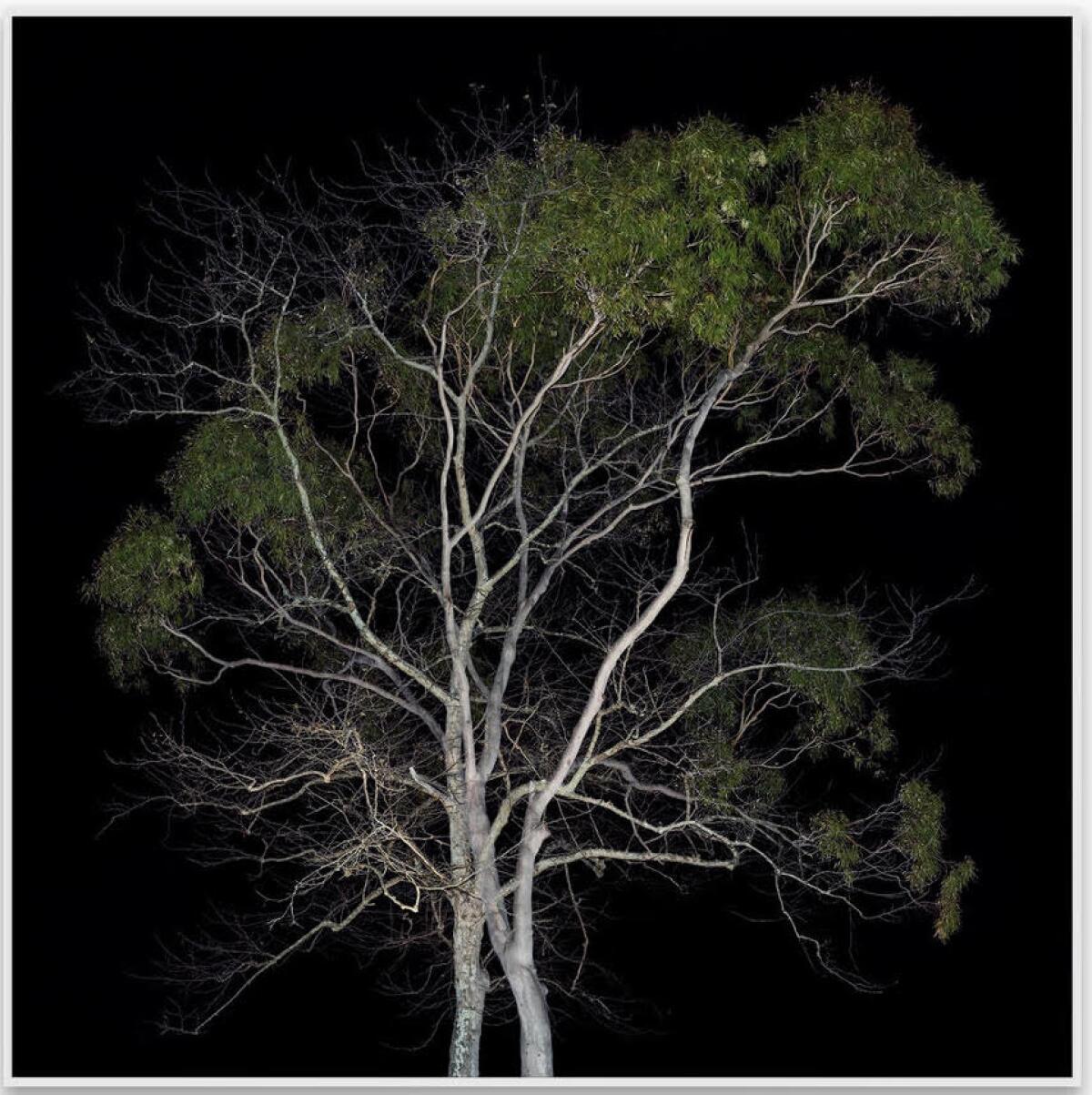
- Share via
It’s the dog days of summer and I’m currently obsessing over the aesthetics of Latin American gelatin-gram. The designs are truly flawless. I’m Carolina A. Miranda, arts and urban design columnist at the Los Angeles Times, and I’ve got all the Jell-O content, not to mention some essential arts news:
Pick a tree
I’ve been thinking a lot about trees.
There are all the environmental reasons for which they are top of mind: Trees are ecological workhorses, they are filters, they provide shade, they offer critical habitat (which manicured turf grass lawns do not).
They are also, increasingly, dead. Ravaged by climate change and mega-fires. “Six of the seven largest wildfires in California history have occurred in the past two years,” reported the Washington Post in a story published this week about how scientists are grappling with how to manage the trees that remain. “In that period, up to nearly one-fifth of all naturally occurring large giant sequoias on Earth have been killed.”
On a recent drive up to San Francisco with trees on my mind, I was reminded of the devastation as swaths of scorched landscape would fade in and out of view from my windshield. It made me think of a recent essay by Rebecca Solnit in the Guardian — an essay about a 300-year-old violin that is also a meditation on trees. “I often think of what we are doing with our frenetic burning of fossil fuels,” she writes, “as a sort of war against the trees.”
Without trees, we barrel recklessly toward extinction.
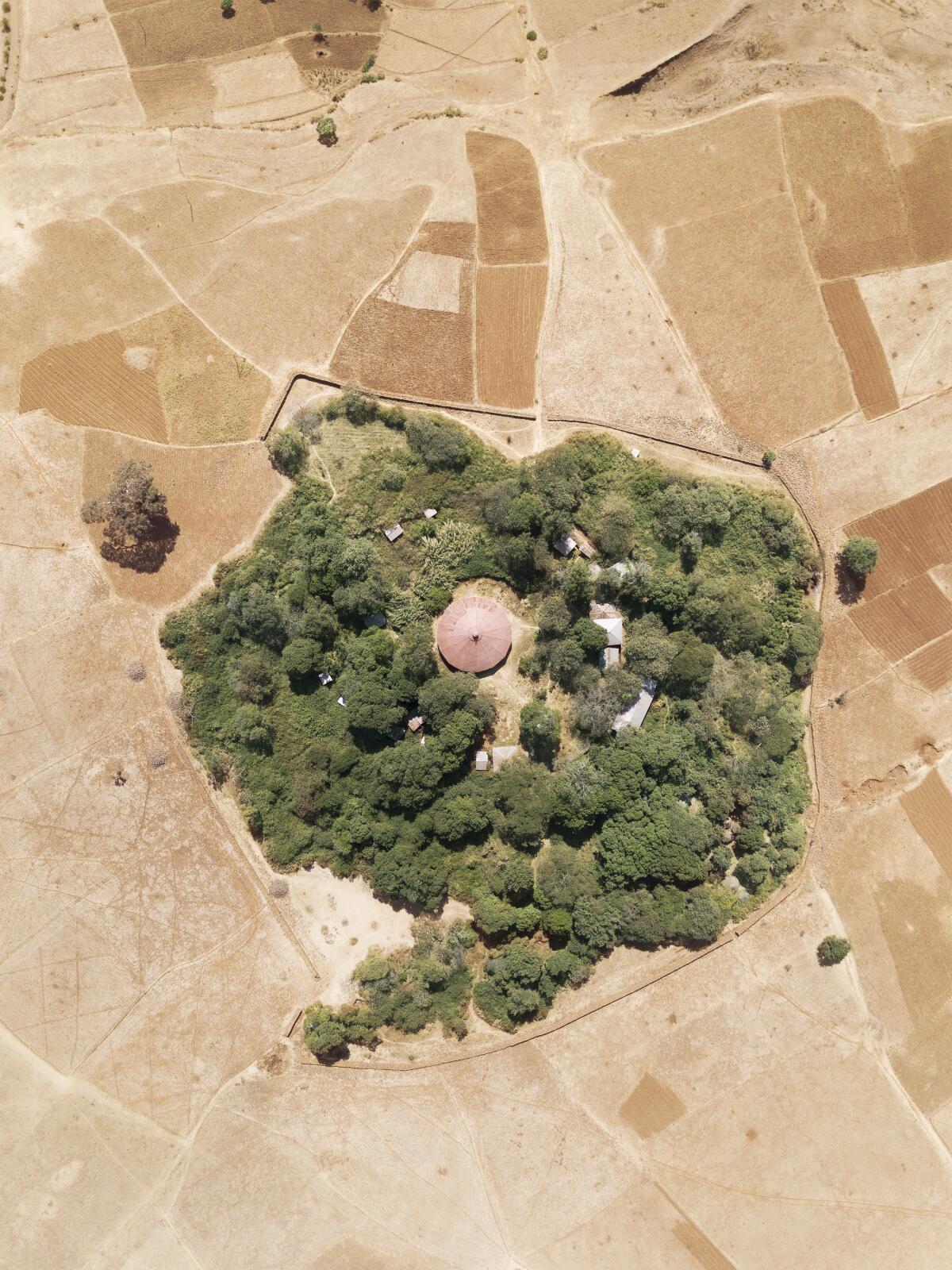
This makes an upcoming exhibition at the Frederick R. Weisman Museum at Pepperdine University in Malibu (an area well acquainted with fire) particularly poignant. “To Bough and to Bend,” a group show that takes the tree as its binding theme, opens at the museum later this month. Organized by Cara Megan Lewis, Meaghan Ritchey, Vicki Phung Smith, Linnéa Spransy Neuss and Michael Wright, it originally opened on March 11, 2020 — the day the World Health Organization declared COVID-19 a pandemic — at Bridge Projects in Hollywood. Because of the pandemic, it went largely unseen.
A lot has happened since then — including Bridge giving up its gallery space last month and shifting, instead, to a roving curatorial model. But, thankfully, “To Bough and to Bend” has been resuscitated at the Weisman. It was one of the shows I had on my itinerary for that weekend in March when we all ended up going into lockdown.
Make the most of L.A.
Get our guide to events and happenings in the SoCal arts scene. In your inbox every Monday and Friday morning.
You may occasionally receive promotional content from the Los Angeles Times.
The show has work that addresses environmental questions, such as Billy Joe Miller’s installation of melted materials drawn from the Paradise fire or Kieran Dodds’ overhead views of the isolated patches of forest that surround churches in Ethiopia.
But there is also plenty that explores the culture and aesthetic significance of trees — be it the literal pattern of a tree’s form or the ways in which trees function as symbols of creation (the Bodhi Tree or the Tree of Life), as well as death. Included in the exhibition is an image by Ken Gonzales-Day, a Los Angeles artist who has long tracked the history of Mexican American lynchings in the West, a history that leads him to the trees on which these murderous actions took place.
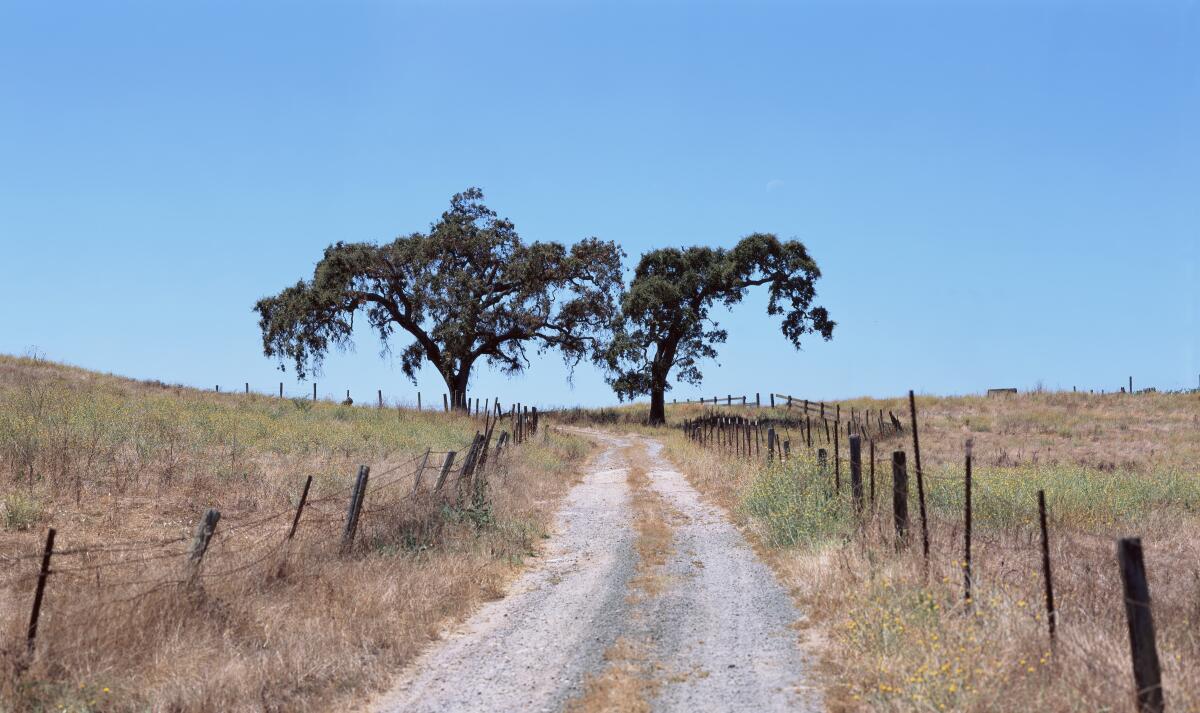
The show’s catalog, which is worth reading, opens with diagrammatic responses to the simple prompt: “If you could be a tree ...”
Sculptor Kazuo Kadonaga chose the Japanese buna, a type of beech that taught him patience, while Amir Zaki selected the Monterey cypress for its “unusual and dramatic forms.” Leonor Jurado, an Ecuadorean artist based in Los Angeles, chose the Polylepis, an Andean tree otherwise known as “the paper tree,” for the sheets of fiber that protect it. “I find it highly poetic,” she writes, “plus its branches possess intense siennas and red colors.”
I’d probably pick the mangrove. I love the idea of being a seed that gets swept away by a current and ends up dropping roots wherever it happens to land.
“To Bough and to Bend” opens at the Frederick R. Weisman Museum on Tuesday, Aug. 30; a reception and a curator-led walkthrough will be held on Sept. 10, starting at 3 p.m.; more on the Bridge Projects.
All the tree content
My colleague Deborah Vankin recently wrote about an immersive forest installation created by artist Glenn Kaino in Los Angeles that remains on view. And, in February, the Soraya in Northridge will stage a concert in honor of trees: “Treeology: A Musical Portrait of California’s Redwood, Sequoia and Joshua Trees.”
Here’s the story I wrote about L.A. artist Jeff Weiss and the bristlecone pine known as Prometheus. Should the incredible snow globe he made of the ill-fated tree perhaps have appeared in “To Bough and to Bend”? My guess is yes.
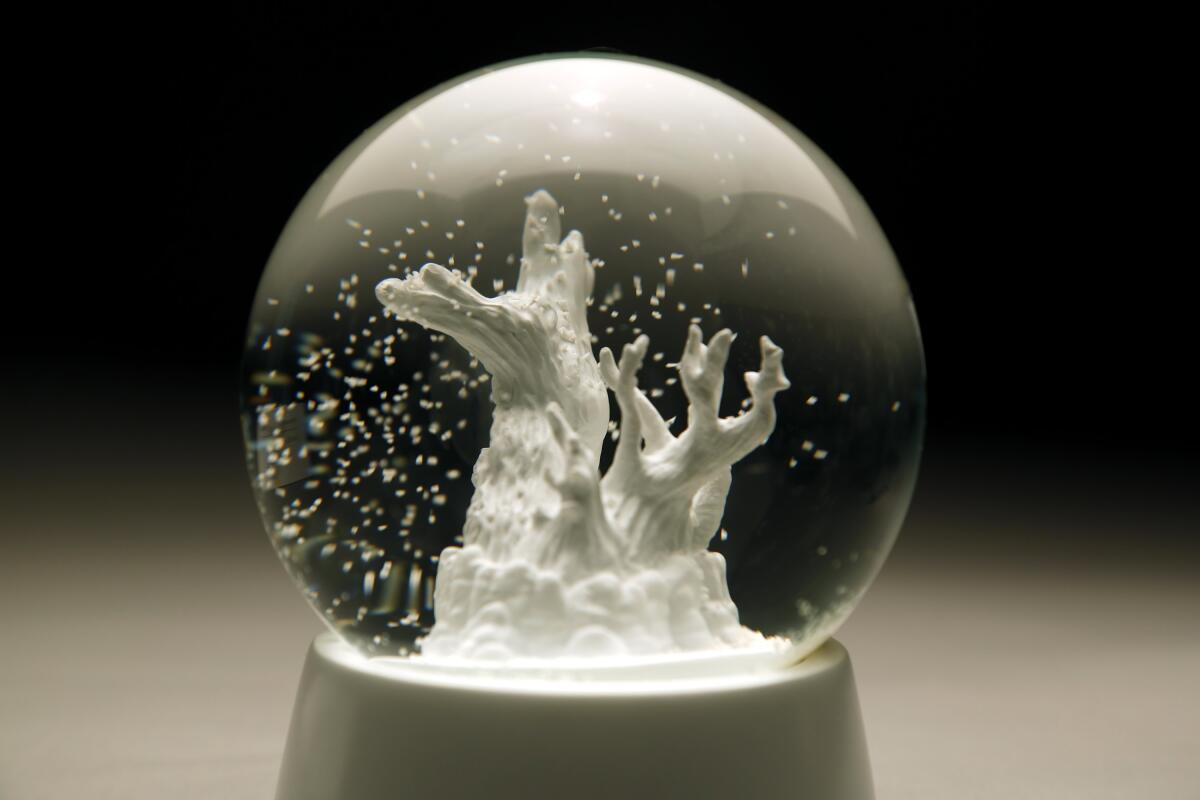
And here’s a guide to five of the nation’s best historic arboretums.
In the galleries
In retrospect, the photographers of the Kamoinge Workshop read like a who’s who of American image-making: Roy DeCarava, who put an elegant frame on Black life; Herbert Randall, who recorded the civil rights movement; Ming Smith, known for artful portraits of figures such as James Baldwin. But in the early days, it was practically impossible for these Black artists to get recognition, so they created their own opportunities as part of Kamoinge. As an exhibition at the Getty Center delves into the collective’s work, Times contributor Eva Recinos tracks their legacy — which goes well beyond their images, extending to a new generation of Black photographers.

My colleagues at Image magazine published a great convo between artists rafa esparza and Maria Maea. They discuss Maea’s work: “altars” that are inflected with spirituality and traditions of craft, many of which feature casts of the faces and hands of her family members. “I’ve been creating these little prayer spaces for myself — these little altars of objects that resonate, like even as a young kid, when I had my dresser, my brother’s dresser and my other brother’s dresser,” she tells esparza. “Our dresser tops were our art installations, right?”
On and off the stage
The Times’ Ashley Lee has a look at the musical version of “The Devil Wears Prada,” which was written by Elton John and Shaina Taub, and which premiered last month at Chicago’s Nederlander Theatre. The new show has evolved some of the story’s narratives from its earlier iterations as book and movie. “Amid the death of the ‘girl boss’ and the ongoing Great Resignation, the musical’s portrayal of the changing attitudes people have toward their jobs happens to be right on trend,” writes Lee. “A toxic commitment to the office, previously glamorized onscreen and standardized across society, is explicitly denounced in its 2022 setting.”

Classical notes
Lina González-Granados made her conducting debut at the Los Angeles Philharmonic last week, a notoriously difficult venue for new conductors. But classical music critic Mark Swed reports that the Colombian-born conductor was “right at home at the Bowl.” She’s a figure who has been in demand on the podium as of late. Next month she will begin a new gig as L.A. Opera’s resident conductor, and later this fall, she’ll be leading the Pasadena Symphony.
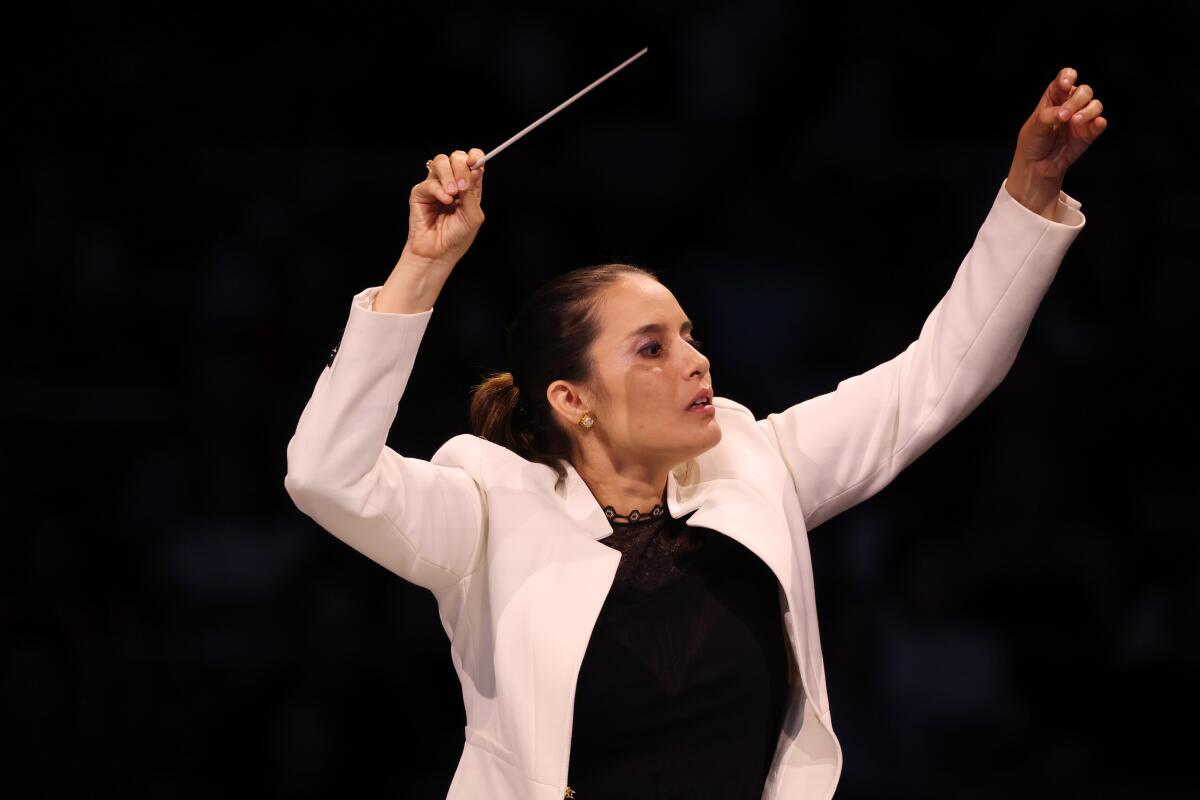
Bass-baritone Davóne Tines premiered a new piece titled “Concerto No. 2: Anthem” at the Hollywood Bowl this week, a work he produced in collaboration with poet Mahogany L. Browne and composers Michael Schachter, Caroline Shaw and Tyshawn Sorey. In advance of the show, he sat down for a chat with contributor Catherine Womack about the ways in which he has been reimagining classical musical for new audiences.
Prosecutors in Argentina allege that Plácido Domingo has been linked to a criminal ring in Buenos Aires that was a front for sex trafficking. The singer did not respond to requests for comment from U.S. media organizations such as NPR and the Washington Post on the matter. The Post’s classical music critic, Michael Andor Brodeur, says it’s time for performance venues to take the disgraced tenor off their performance slates.
Essential happenings
Matthew Cooper has the lowdown, with the nine best bets for your L.A. weekend, including the 19th New Original Works Festival at REDCAT and the opening of the anticipated “Regeneration: Black Cinema 1898-1971” at the Academy Museum of Motion Pictures.
Enjoying this newsletter? Consider subscribing to the Los Angeles Times
Your support helps us deliver the news that matters most. Become a subscriber.
Meanwhile, in the great outdoors...
Oakland-based photographer Thomas Broening has spent the last few years recording some of California’s many calamities — drought, wildfire, homelessness — for a project titled “The End of the Dream.” He has been presenting these, not in museums or galleries, but on billboards in public locations around the state.
The billboards can be cryptic in nature, containing no text in the way of explanation. As Broening notes in his statement: “All the images are devoid of people and are untethered to a specific time or place. Is this 50 years ago or 50 years in the future? Where are these places? Is this even Earth?”
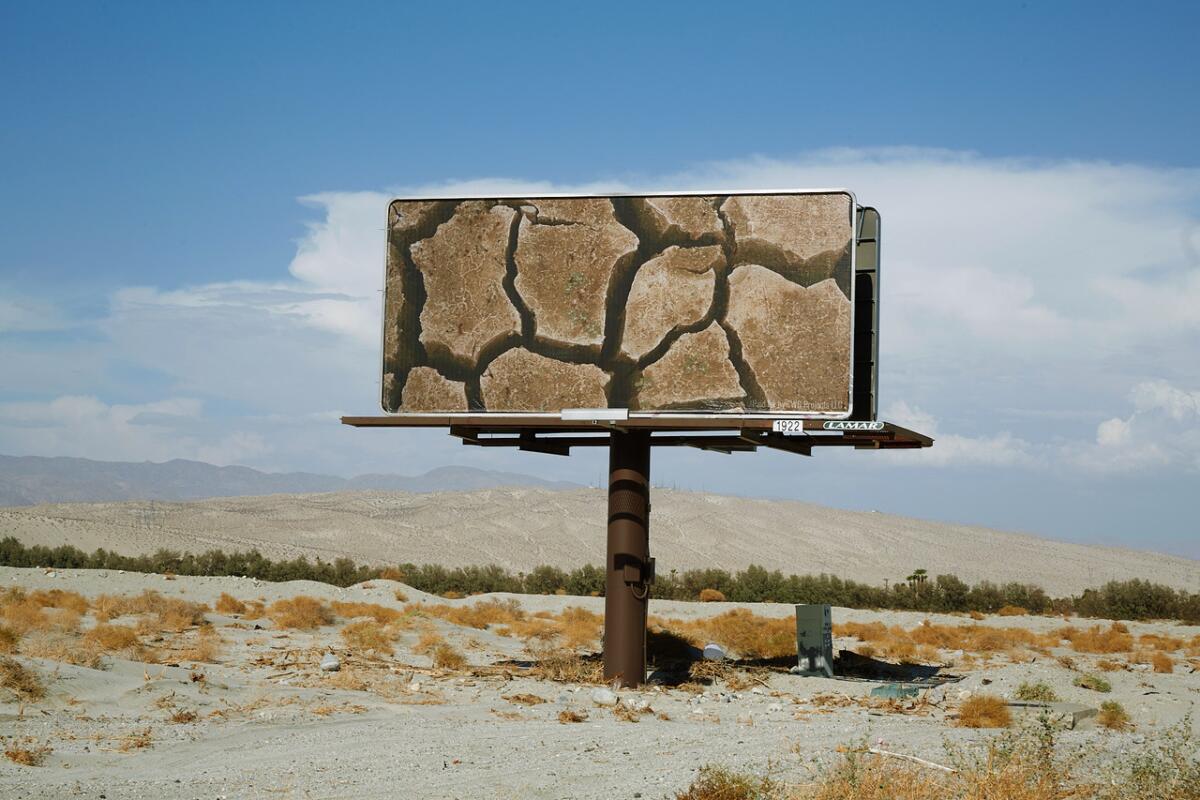
The artist kicked off the project in the Sierra foothills in May and has since installed images on billboards in the Bay Area and, now, in more than half a dozen locations around Palm Springs, where they will remain on view into September.
The Desert Sun has a good report, along with a list of sites where you can go have a look.
Moves
Rafael González has been named the new president and CEO of Grand Performances, which presents free concerts and other events in downtown Los Angeles. González had been serving as interim president since the departure of former director Mari Riddle in May.
Passages
Abdul Wadud, a genre-busting cellist who was an important collaborator with Pulitzer Prize-winning composer Anthony Davis (and who was known in classical music circles by his birth name, Ronald DeVaughn), has died at 75.
Japanese couturier Hanae Mori, who was known for imbuing Western-style clothing with brilliant prints inspired by Japanese design — in particular, a signature butterfly motif — is dead at 96.

Peter Ellenby, a photographer who recorded San Francisco’s indie music scene in the ‘90s, and whose motion-filled images appeared on album covers, has died at the age of 53.
In other news
— Love this piece about Bruce Talamon’s recollections of photographing Wattstax. Be sure to watch the video.
— Time Sensitive has a great interview with artist Alfredo Jaar, who currently has work on view in the exhibition “This Is Not America’s Flag” at the Broad.
— In San Francisco, the beloved Castro Theatre, a historic 1920s movie palace built in the churrigueresque style, faces change under new ownership.
— Artist Assaf Evron installs photographic pieces on buildings by Mies van der Rohe that add a touch of nature to the architect’s Modernist surfaces. See more on the artist’s website.
— The Joffrey Ballet has launched a contemporary ballet training program — the first such full-time program offered by a classical ballet company in the U.S.
— Solange Knowles is composing a score for the New York City Ballet.
— As age and heat take their toll, the foundations managing Donald Judd’s work in Marfa, Texas, are working on preserving a legacy that wasn’t intended to be institutional.
— Don’t miss this short but stunning performance by violinist Laura Ortman at Gagosian in New York — staged within a survey of works by Nam June Paik.
— The Guardian has an amazing story about a German-Nordic folk collective called Heilung, who recently recorded the world’s oldest song. It includes references to Syrian archaeology, the Iron Age, Norse paganism and Viking reenactment societies. It’s all very metal.
And last but not least ...
One word: micheladas.
The biggest entertainment stories
Get our big stories about Hollywood, film, television, music, arts, culture and more right in your inbox as soon as they publish.
You may occasionally receive promotional content from the Los Angeles Times.




